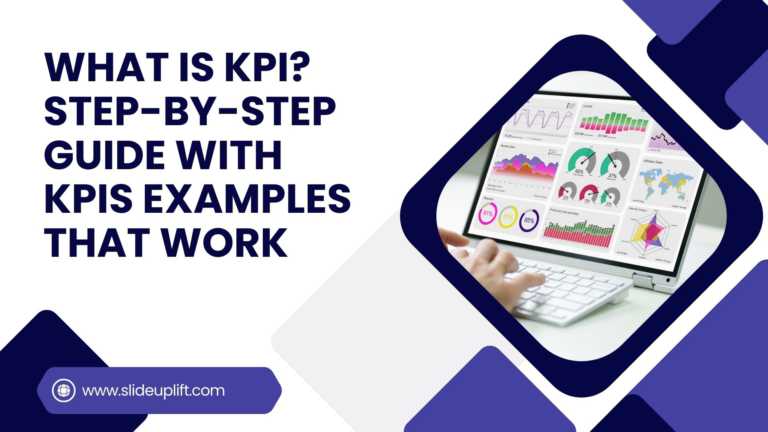Breaking Down Work Breakdown Structure in Easy Steps : Must Have Resource For Project Managers
Project management is complex. It necessitates keeping track of multiple – sometimes geographically dispersed – teams, coordinating tasks, and holding everyone accountable to a common goal. Fortunately, there are a number of project management approaches that can be of assistance. When it comes to large, complex projects, work breakdown structure is one of the best approaches.
A work breakdown structure (WBS) is one of the first concepts you should learn as a project manager, but creating one that adds value to your project is much more difficult than many project managers expect.
In this blog, we’ll explain what a work breakdown structure is and give you a rundown of everything you need to know about the work breakdown structure to support a successful project.
What Is a Work Breakdown Structure (WBS)?
A work breakdown structure (WBS) is a visual, hierarchical, and deliverable-oriented project breakdown. It is a useful diagram for project managers because it allows you to break down your project scope and visualize all of the tasks completed.
Work breakdown structure is a project management approach that provides a visual way to detail project deliverables. It accomplishes this by presenting key milestones within a hierarchical structure that divides large projects into smaller, more manageable tasks. As a result, it is ideal for complex projects with many steps and stakeholders.
The work breakdown structure outlines all project work steps, making it an essential project planning tool. The final project deliverable and the tasks, along with the work packages, are placed on the WBS diagram. The WBS levels below subdivide the project scope to indicate the tasks, deliverables, and work packages required to complete the project from beginning to end.
Whatever visual method you use, your breakdown structure should include the following elements:
- A project baseline containing a project plan, description, and name
- Participants in the project
- A well-planned project schedule
- Deliverables and subtasks for the project
The structure will then be organized based on the hierarchical levels of sub-deliverables. Your entire project will most likely be divided into multiple task levels, depending on the amount of work required and the overall project timeline.
What Are The Levels Of Work Breakdown Structure?
The levels of a work breakdown structure help in the separation of tasks based on dependencies. Because projects can vary so greatly, so will the levels of your work breakdown structure. While most projects have some form of dependency, it’s possible to come across projects that don’t.
Dependencies are classified into three levels, though your structure may require more or fewer. Each level is linked to a parent task, with the work required to finish the parent task organized into dependencies.
Let’s take a look at the top three dependencies in a work breakdown structure.
Level 1
The first level of a work breakdown structure is the most simplified form of the project because it contains the parent task. This is typically the same as the project goal.
Assume, for example, that your project team is redesigning your website. The first level of your work breakdown structure should be:
- Launch new website design
As you can see, it’s easy to understand. Level one is the primary goal and the first of many project management phases. The work required to complete this goal will be completed in levels two and three.
Level 2
Depending on the scope of the project, your breakdown structure will become more complicated. Level two of your work breakdown structure will include subtasks, also known as dependencies, of the parent task.
Consider what subtasks might be required to launch a new website design.
- Revamp brand guidelines
- Create messaging framework
- Redesign your logo
- Add new photography
Level two is slightly more detailed than level one, but it still provides a high-level overview of the dependencies required to complete the project objective.
Level 3
The next level of your WBS will further divide these dependencies into sub-dependencies. This includes all of the work required to complete the level two tasks.
Here’s an example of the tasks listed above broken down into the third level of your breakdown structure.
- Brand colors
- Brand mood board
- Design UX
- Headline
- Mission statement
- Language guidelines
- Sketch
- Mockups
- Final designs
- Photoshoot
- Photo edits
- Final selections
Level three is where you separate each task into its sub-dependencies. As you can see, the work required to achieve the project’s goal is becoming much clearer. Depending on how specific you want your visual to be, you may even choose to add additional levels to your WBS.
Why Use A WBS In Project Management?
Before we get into why let’s understand what is a work breakdown structure in project management?
It’s straightforward. As each part of the work breakdown structure provides more detail, the work breakdown structure in project management visually defines manageable chunks of a project that a team can understand.
The goal of a work breakdown structure (WBS) in project management is to make a large project manageable. It enables you to:
- Develop a schedule
- Determine the cost of the project
- Set dependencies
- Write a statement of work
- Assign responsibilities and clarify roles
- Track the progress of a project
To identify potential risks in a project, project managers and teams frequently use project work breakdown structures. Because the project is divided into branches, and not properly defined branch represents a scope definition risk. Such risks should be evaluated as the project progresses. The project manager will identify communication points and develop a plan for the entire project because the work breakdown structure is integrated with an organizational breakdown structure. In addition, when a project is falling behind schedule, referring to the WBS can help quickly identify the major deliverables that a late sub-deliverable will impact.
Work Breakdown Structure Rules
As you begin using the work breakdown structure, there are several rules to remember, many of which are covered in the work breakdown structure definition. These rules are as follows:
100% Rule
The work and budget allotment for all deliverables must always add up to 100% and be done in a hierarchical order. For example, all the deliverables that are present on level 2 must have a total of 100 % of the total project work and budget as outlined at level 1 of the process. All level three deliverables below must add up to 100% of their parent deliverable. Therefore, if the parent deliverable consists of 40% of the project’s work and $60,000. The sum of all the sub-deliverables must be 40% of the project’s work and $60,000.
Mutually Exclusive
It is mandatory for every deliverable and sub-deliverable to be mutually exclusive, which means that the work breakdown structure can have only one milestone. Because only one team or person is responsible for each deliverable, mutual exclusivity helps to eliminate duplicate work, high costs, and communication issues.
Focus on Outcomes
As mentioned earlier, it is crucial to understand that each and every deliverable that is defined in the work breakdown structure defines the outcome of the project instead of an action. This rule makes it easier to manage project scope and gives project team members the freedom to complete each outcome as they see fit.
The 8/80 Rule
Work packages (the work required to complete each deliverable) should not take less than eight hours or more than 80 hours (10 days of full-time work) to complete, according to the 8/80 rule.
If the work package tasks less than 8 hours to be completed, it is most likely to get integrated with another deliverable. On the other hand, if it takes more than 80 hours to get completed then the deliverable will be divided into different components.
How To Apply Work Breakdown Structure To Project Lifecycle?
Till now, you have understood what a work breakdown structure is now; let’s look at a real-world example. While the look of your template will vary depending on the method you use to create it, your WBS should have similar task hierarchies and levels.
![]()
To get you started, here is an example work breakdown structure based on the above information.
WBS name: Revamp Website design
Description: Revamp our current website design based on the new branding approach.
Completion date: 24 December 2021
Budget: $50,000
Level 1:
- Revamp current website design
Level 2:
- Modify brand guidelines (Complete)
- Create a new messaging framework (Complete)
- Redesign the brand logo (In progress)
- Add new images and graphics (Open)
Level 3:
- Modify brand guidelines
- Brand colors— Smith Mooney
- Brand mood board— Smith Mooney
- Design UX— Garcia Brooks
- Create a new messaging framework
- Headline— Miller Daniela
- Mission statement— Miller Daniela
- Language guidelines— Miller Daniela
- Redesign the brand logo
- Sketch— Anderson Thomas
- Mockups— Anderson Thomas
- Final designs— Anderson Thomas
- Add new images and graphics
- Photoshoot— Kabir Madan
- Photo edits— Anderson Thomas
- Final selections— Kabir Madan
You must keep in mind that your work breakdown structure will vary based on the size of the project, its complexity, the deadline, and the number of people assigned for it. Each of these details will influence your project’s dependencies and visual hierarchy.
Best Work Breakdown Structure Templates
Complex project planning can be difficult. Using the Work Breakdown Structure template, you can quickly break down the total scope of the project, including specific deliverables and activities—this aids in estimating resources and costs, developing a task schedule, and managing each phase.
Once the project needs to accomplish, organize those tasks into multiple levels, and graphically display these elements. It’s a deliverable-based approach, which means you’ll end up with a detailed project plan outlining the deliverables you’ll need to complete the job.
Here are the top work breakdown structure templates by SlideUpLift.
Source: WBS Template By SlideUpLift
Source: WBS Template By SlideUpLift
Source: WBS Template By SlideUpLift
Wrapping It Up
Creating a work breakdown structure isn’t all that difficult. In fact, once you’ve mastered it, adding a visual hierarchy or project tasks will benefit you and your team. There is a work management tool for everyone, whether you are a visual or verbal learner.
The work breakdown structure (WBS) is one of the most important artifacts that a project manager must create during a project, and it distinguishes amateurs from experienced project managers.











